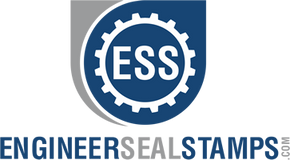Picture this: you’ve got a table of products, each one waiting eagerly for that final seal of approval. You can see people moving around, checking quality details, verifying safety, and ensuring everything meets standards. How do you confirm each product has officially “passed”? Enter the passed inspection stamp. This humble yet powerful tool indicates that your items are good to go, saving you time and reducing confusion about what’s approved and what isn’t. In this post, we’ll talk through how inspection stamps work, explore why they matter, and look at the best ways to use them for top-notch quality assurance. You’ll come away with practical tips and insights to streamline your quality checks, whether you run a huge factory or a small family shop at home.
Understand The Role Of A Passed Inspection Stamp
You might be wondering what this stamp really does (besides look official). An inspection stamp is a quick and consistent method to mark finished goods or documents that meet your specific requirements. Instead of scrawling initials or a signature on every product, you can just press a stamp, and you’re done. It’s clean, easy to read, and gets the point across that an item has been fully approved.
A Gateway To Clear Communication
Quality assurance (QA) and quality control (QC) revolve around clarity. You want everyone, from production staff to warehouse teams, to know instantly whether something is ready to move forward or if it’s still in limbo. Using an inspection stamp eliminates guesswork. A clearly stamped “passed” or “approved” signals that the product already completed vital checks. This approach not only saves time but also ensures consistent marking across all items.
Building Trust With Customers
Think about how you feel when a product label says “Quality Tested.” You trust it more, right? When customers see a precise inspection mark on their items, they know you’re committed to high standards. That trust isn’t just about bragging rights; it’s part of your brand reputation. A passed inspection stamp can assure your customers that you’re dedicated to delivering durable, well-made products.
Explore The Benefits For Your Business
Stamps seem old-fashioned, especially in a digital age filled with barcodes and chips. But let’s be honest, a physical stamp is quick, cost-effective, and requires no special tech to run. That’s precisely why businesses still rely on them for day-to-day operations.
Instant Verification
Stamping items as soon as they pass inspection keeps everybody in the loop. Forklift drivers don’t have to pause to wonder if a box can head to shipping. Sales teams can confirm availability right away. A split-second action with a stamp speeds up your entire workflow.
Reduced Errors
Without a standardized marking system, your team might rely on scribbled notes, sticky labels, or memory alone. That risks confusion. Some batches could be marked incorrectly, or items might slip through unlabeled. But with a uniform inspection stamp, you ensure every product is labeled the same way, eliminating guesswork.
Improved Accountability
When you standardize your inspection method, you also create a layer of accountability. Everyone on the team knows the meaning of that stamp, and it’s easy to trace who is responsible for verifying items. This clear chain of responsibility helps you identify and fix issues quickly if they arise.
Compare Stamp Materials And Ink Options
One question you might have is: what type of stamp should I get? Today’s market offers a smorgasbord of options, each with its own perks. There are hand stamps, self-inking stamps, pre-inked stamps, as well as different ink formulas suited to various surfaces.
Hand Stamps
- Simple to use and budget-friendly
- Require a separate ink pad
- Ideal if you don’t stamp a huge volume each day
Self-Inking Stamps
- Built-in ink pad for speed
- Roughly 5,000–10,000 impressions before the pad needs replacing
- Great for moderate stamping needs
Pre-Inked Stamps
- Ink built into the stamp itself (no separate pad)
- Crisp, high-quality impressions
- Can last for thousands of impressions before re-inking
Consider Specialty Inks
Not all products come on a neat little paper box. Sometimes, you need to mark metal, plastic, or even glass. Specialty inks exist for these surfaces, helping you make a long-lasting impression—literally. Some are waterproof, UV-resistant, or quick-drying, ensuring your stamped mark won’t smudge or disappear over time.
Use Best Practices For Marking
You’ve chosen your stamp, but now you’re wondering how to integrate it seamlessly into your workflow. It’s helpful to set up a simple system so that the process of inspecting and marking items is straightforward. After all, if it’s too complicated, your team might revert to old habits.
Create A Visual Workflow
Keep a visible sign or flowchart near workstations to remind everyone of the quality assurance process. For instance, you can outline steps like:
- Inspect item according to the checklist.
- If criteria are met, use the stamp.
- Move item to the “approved” shelf.
- If not approved, place the item in the rework area.
This small guide removes confusion. Nobody wastes time double-checking how to do things, which lowers errors and speeds up your operations.
Keep Your Stamp Clean
Ink can build up on your stamp’s surface, leading to blurry or partial impressions. To avoid this, wipe it gently with a soft cloth every day or two, paying attention to any grooves where ink might settle. For deeper cleaning, you can use a mild stamp conditioner. Clean stamps yield crisp images and ensure your marks remain legible.
Conduct Periodic Spot Checks
Even the best systems need a quick once-over now and then to confirm everything’s running smoothly. Conduct random inspections of stamped items to verify the ink quality, clarity, and correct usage. If you spot any issues, address them immediately so the problem doesn’t multiply across countless products.
Partner With ESS For Quality Stamps
Now, let’s talk about where to find reliable inspection stamps. The last thing you need is a supplier who cuts corners or delays shipments. That’s why ESS stands out. Family owned and operated since 1964, ESS prides itself on being a top-notch supplier for all your stamping needs, from standard self-inking options to custom inspection stamps. We know how important fast turnaround is, especially if you’re dealing with a high-volume business that can’t afford downtime. You’ll also benefit from our excellent customer service, which makes the entire process—designing, ordering, and shipping—smooth as can be.
Why Choose A Custom Logo Inspection Stamp?
Perhaps you’re not just marking items with “Passed”—you also want your company’s branding front and center. A custom inspection stamp featuring your logo can reinforce brand identity at every checkpoint. We craft and design these stamps to fit your exact needs. Just head over to our company logo inspection stamp page for more details. You’ll see examples of how a personalized design can amplify professionalism and consistency across your product lines.
Taking Pride In Every Stamp
The reason people rely on ESS is our dedication to quality from start to finish. We’re not just about stamping a “passed” mark. We’re about helping you maintain and showcase the high standards that define your business. If you have questions about which ink you need or whether a self-inking stamp works better than a pre-inked one, our team is happy to offer practical tips so you can make an informed decision.
Plan For Growth And Scalability
As your business expands, your inspection processes might shift. You could add new product lines, upgrade machinery, or move to a larger facility. Whichever direction you take, your stamping process should remain effective and easy to manage. Keeping a scalable plan in mind helps you avoid hiccups later.
Broaden Your Inspection Criteria
When you develop new products or adopt new standards, revisit your inspection checklists. Do you need multiple stamps for different inspection levels, like “materials approved” vs. “final product passed”? Creating a clear system of stamps, each with a designated color or wording, can help you maintain order even as you handle more products.
Learn From Customer Feedback
Your customers might have insights into what’s working and what’s not. Did they receive a product that wasn’t stamped? Or maybe the stamp was unclear? Consider setting up a quick feedback loop so you can adjust your stamping workflow or ink choice if needed. A few small tweaks often go a long way in customer satisfaction.
Balance Automation With Hands-On Checks
Yes, new tech can automate parts of your production line, but there’s value in hands-on inspection and physical stamps, especially for certain industries. Some processes can’t be fully automated, and a final human glance reinforces quality standards. Align your stamping approach with your automated processes so there’s no conflict or redundancy.
Understand The Cost-Benefit Of Inspection Stamps
You might be asking yourself: “Are these stamps actually worth the investment?” In most cases, absolutely. Stamps themselves are relatively affordable, and the speed and consistency they provide often pay dividends. Plus, when you minimize labeling mistakes or shipping the wrong items, you save money by avoiding rework, returns, and customer dissatisfaction.
| Factor | Without Stamps | With Stamps |
|---|---|---|
| Consistency | Risk of inconsistent markings | Uniform, neat impressions |
| Speed | Handwriting slows workflow | Quick imprint, consistent look |
| Error Rate | Higher chance of mislabeling | Lower chance, standardized mark |
| Labor Efficiency | Extra time clarifying statuses | Immediate clarity for next steps |
As shown above, adopting a standardized stamping approach typically leads to smoother operations and fewer errors. The end result is a more efficient process that keeps both your team and your customers happy.
Build Confidence In Your Quality Control
Ever wonder why some businesses seem to have their QC locked down so perfectly? They’re not necessarily bigger or richer; they’ve simply put effort into systems that work. Part of that system is a clear, reliable method to mark a product as passed, finished, or ready to ship. A passed inspection stamp is a simple tool, but it carries huge significance in building confidence. When you see that mark, you know the product underwent careful checks. It’s a signal of trust, not just to your team but to anyone who handles that product downstream.
Sharing That Confidence Externally
Don’t be shy about communicating your inspection process to clients or stakeholders. They appreciate transparency. Let them know your goods are inspected with standard operating procedures that involve official stamps. This kind of openness can set you apart in competitive markets.
Training Your Team
A stamp approach is only as good as the people who implement it. That’s why team training is important. Encourage everyone to take pride in stamping items after thorough inspections, seeing it as the final nod of approval. A well-trained staff ensures your system works seamlessly day in and day out.
FAQs On Inspection Stamps
How Long Does The Ink Last On Various Surfaces?
It depends on the ink type and the surface. Standard inks on porous surfaces (like cardboard) can last for years, while specialized inks can remain legible on metals or plastics without fading. Check the product description or ask your supplier if you need specific durability.Are Self-Inking Stamps Better Than Hand Stamps?
Self-inking stamps are faster since they have a built-in ink pad, making them fantastic for medium-volume use. Hand stamps require you to press on a separate ink pad but might be more affordable for smaller operations. It really comes down to preference and volume.What’s The Process For Designing A Custom Stamp With My Logo?
Typically, you’ll submit your logo or artwork to the supplier, specify your size preferences, ink color, and any text. At ESS, we’ll guide you through the process and confirm a proof before final production.How Often Should I Clean My Stamp?
If you notice distorted impressions or heavy ink buildup, it’s time for a quick wipe. Generally, a light cleaning once or twice a week keeps your stamp delivering crisp impressions.Is A Passed Inspection Stamp Required By Law?
Not usually. However, many industries have internal processes or safety requirements that specify how final approval is documented. A physical stamp is a straightforward way to meet these guidelines, but always check with your industry’s regulations.
Wrap-Up And Key Takeaways
A passed inspection stamp might seem like a simple tool, but it can have a major impact on your processes. By offering clear visibility, reducing errors, and instilling trust, a physical stamp streamlines your quality assurance methods. Remember, it’s not just about stamping “passed”; it’s about building a robust system that helps everyone on your team know exactly where each item stands.
When you’re ready to upgrade your inspection process, consider partnering with ESS. We’re a family-owned business, operating since 1964, and we take pride in providing top-notch quality stamps, lightning-fast turnaround times, and excellent customer service. Whether you want a self-inking stamp for speed, a custom design for branding, or just a basic hand stamp, we have the know-how to find the perfect fit. Plus, don’t forget to check out our company logo inspection stamp if you want to personalize your approvals.
So go ahead, streamline your QC, and make every passing product shine with confidence. By adopting a consistent stamping process, you’ll keep your operations running smoothly, your customers satisfied, and your team proud of a job well done.


















